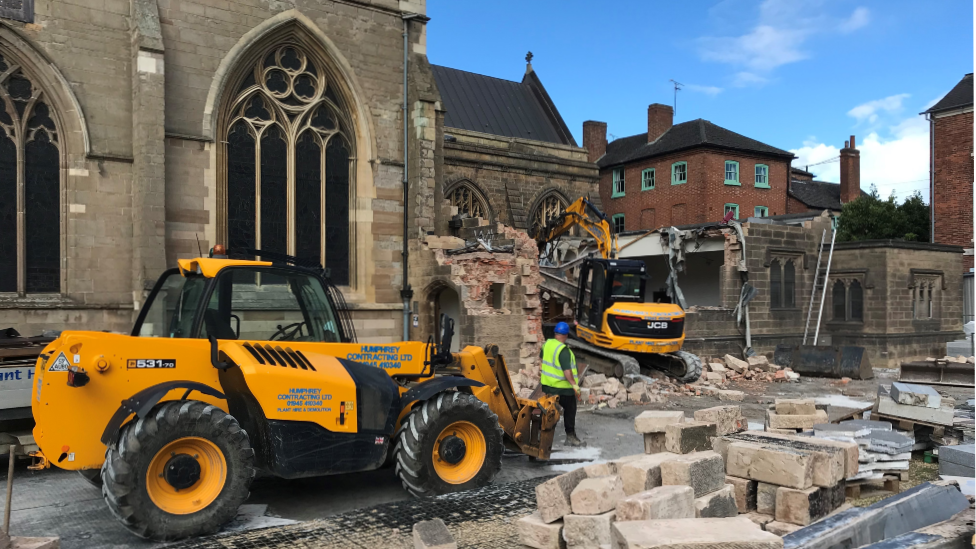Glass floor display of market dungeon ruled out
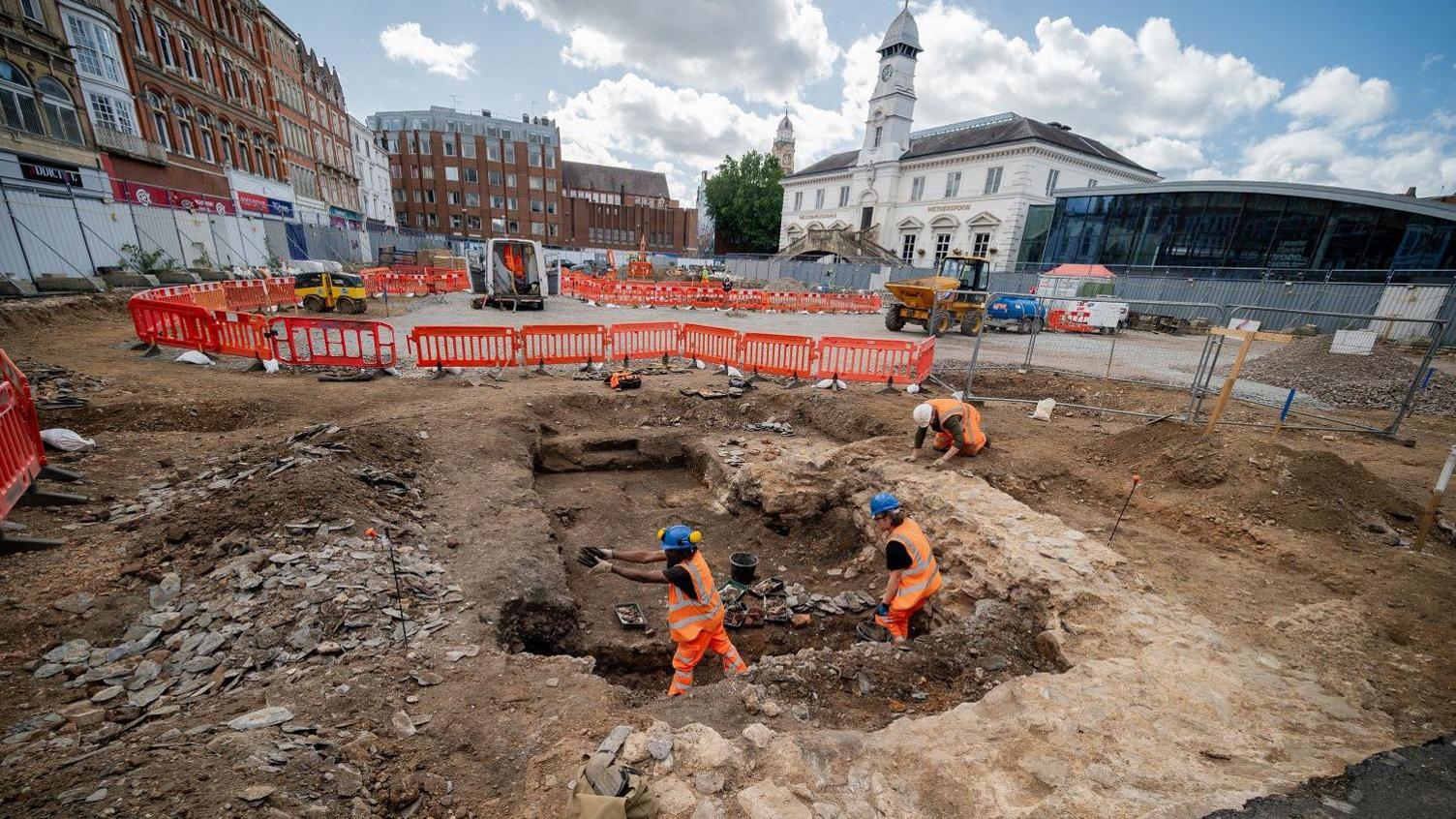
University of Leicester archaeologists have been working on the site since July
- Published
Proposals to leave a "vile" medieval dungeon on display under toughened glass flooring at Leicester market have been ruled out.
Parts of a 16th Century prison were discovered by archaeologists excavating the area in the summer.
Leicester City Council said it had explored the possibility of making the uncovered remains of a building, known as the Gainsborough Chamber, a feature of a new-look £7.5m market place it is currently developing.
City mayor Sir Peter Soulsby said he asked council officers to consider the idea after seeing AI-generated images of how the market might look with see-through flooring.
"It is not a bonkers idea," Soulsby said. "There are examples where archaeological finds have been displayed that way.
"However, I am advised that, as attractive as it could be, it would simply be too expensive and not very practical."
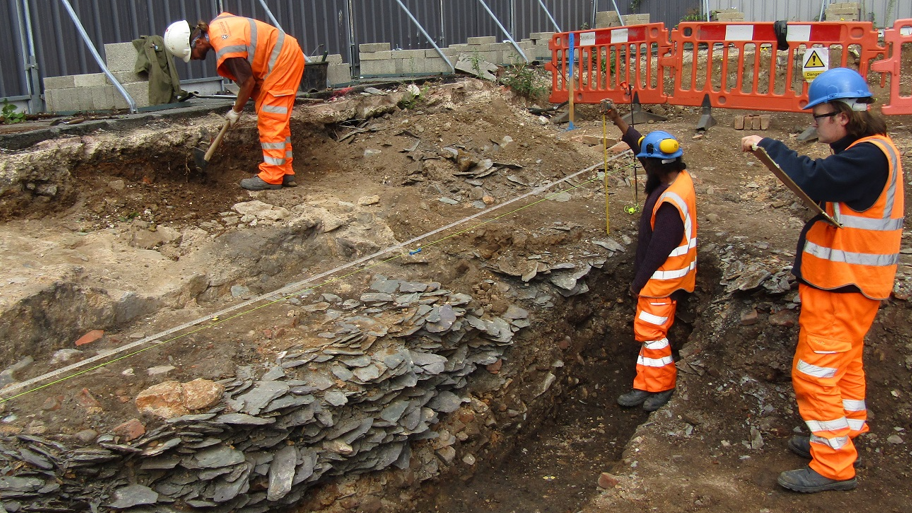
The dig also found traces of the old medieval market and some stalls
The remnants of the building, found by experts from University of Leicester Archaeological Services (ULAS), are instead set to be fully researched, recorded and then covered over again to create a new area for traders.
Soulsby, however, said their discovery, and that of Roman remains as well as evidence of the city's earliest medieval market place surfaces, would be marked.
He said: "When they are carefully covered over to allow the area to be returned to its use as a thriving market, I'm determined visitors should be able to find out about their part in our city's rich history.
"We will likely have details of the finds on heritage interpretation boards, as we have in other locations around the city."
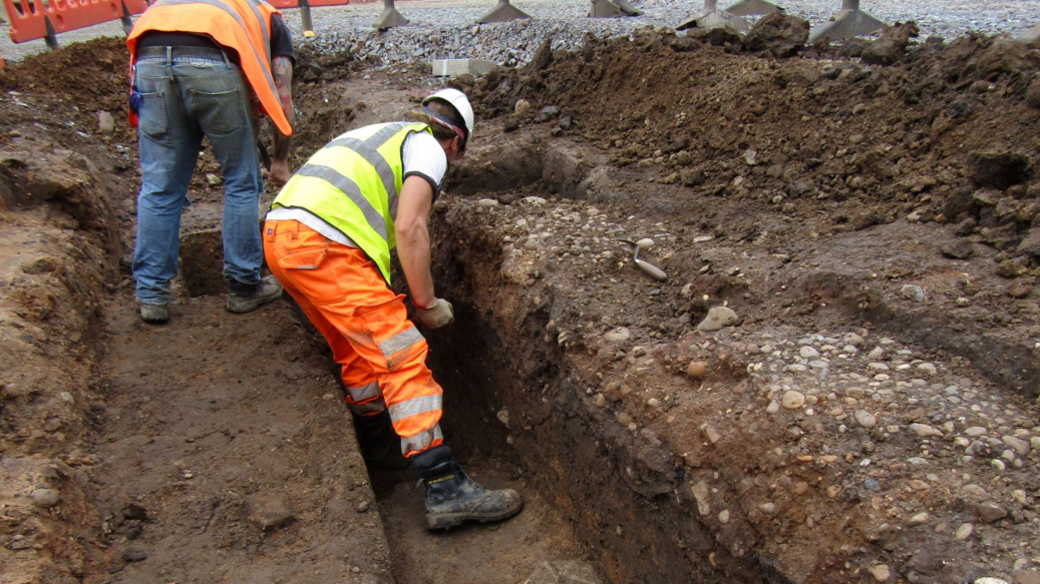
The medieval cobbles will be recorded and studied before being paved over again
Soulsby added: "A centuries-old prominent municipal building with its own prison is quite the find but it is quite small, not quite on the scale of the ruins of Pompeii and not so visible."
According to a book about medieval Leicester, written by historian Charles Billson, one of the prisoners interned in the dungeon in 1533 wrote: "Master Mayor sent me forthwith to a most vile prison called the Gaynsborrow, then offered to put gives and fetters upon my legs and so to lye upon hard planks without bed or straw and without company or comfort."
Among the other finds made during the dig was the grave of a Roman infant beneath the floor of a timber building, thought to be nearly 1,800 years old.
ULAS explorations have further identified the cobbled surface of the original medieval market, and signs of the earliest wooden market stall.
They also found prehistoric tools and Roman coins, tiles and kilns, which were the first ever found within Leicester, known by the Romans as Ratae.
ULAS has said it will publish a full report on its dig and plans are under way to put some of the discovered artefacts on public display.
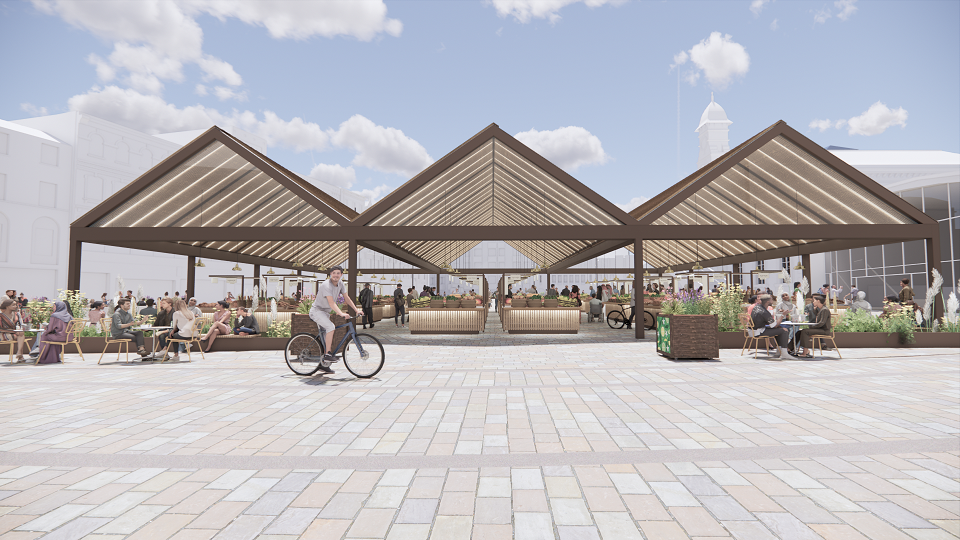
The new market - once finished - will be food-focused and flexible, the city council has said
Get in touch
Tell us which stories we should cover in Leicester
Follow BBC Leicester on Facebook, external, on X, external, or on Instagram, external. Send your story ideas to eastmidsnews@bbc.co.uk, external or via WhatsApp, external on 0808 100 2210.
Related topics
- Published28 September
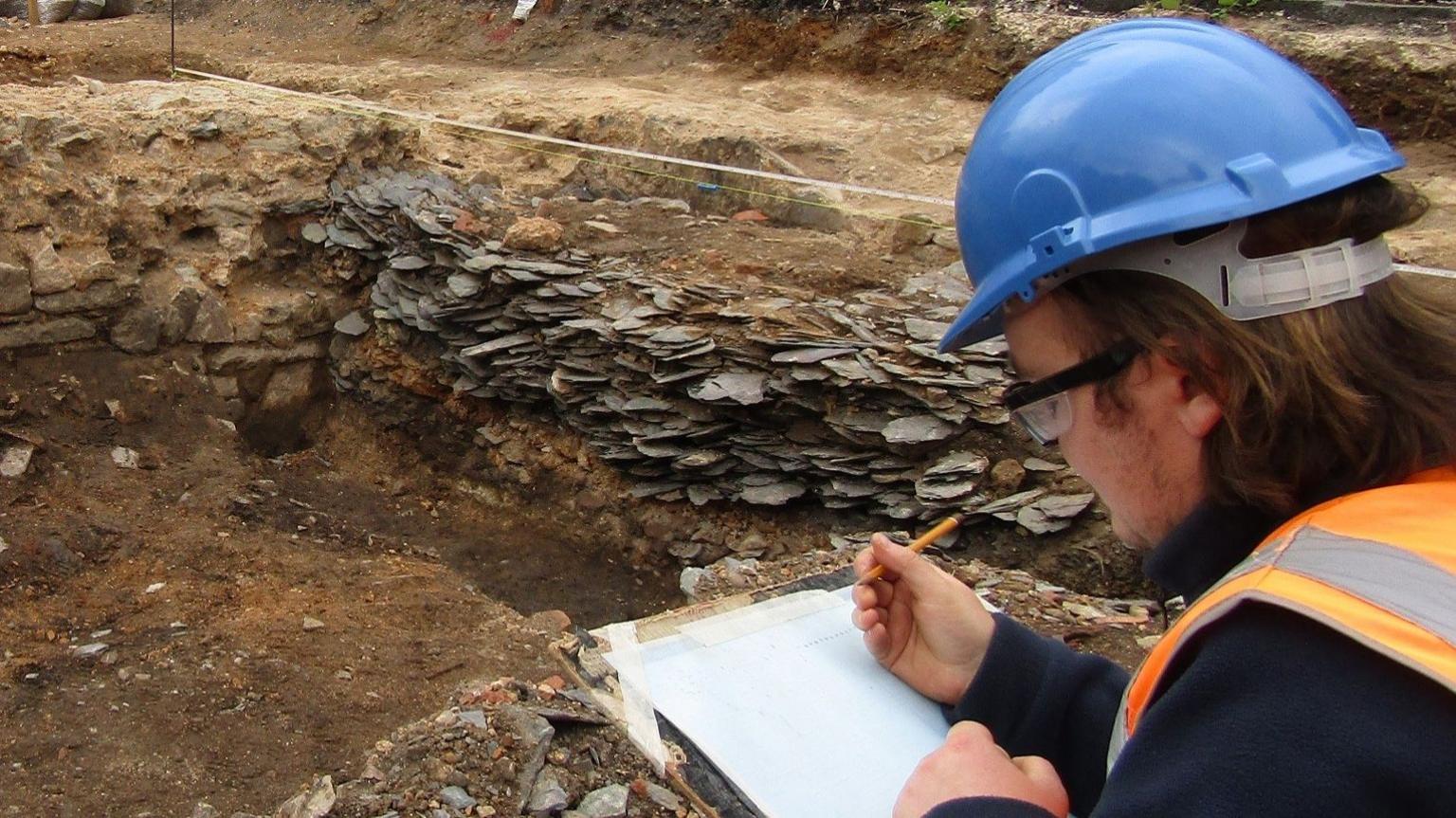
- Published23 September

- Published4 August
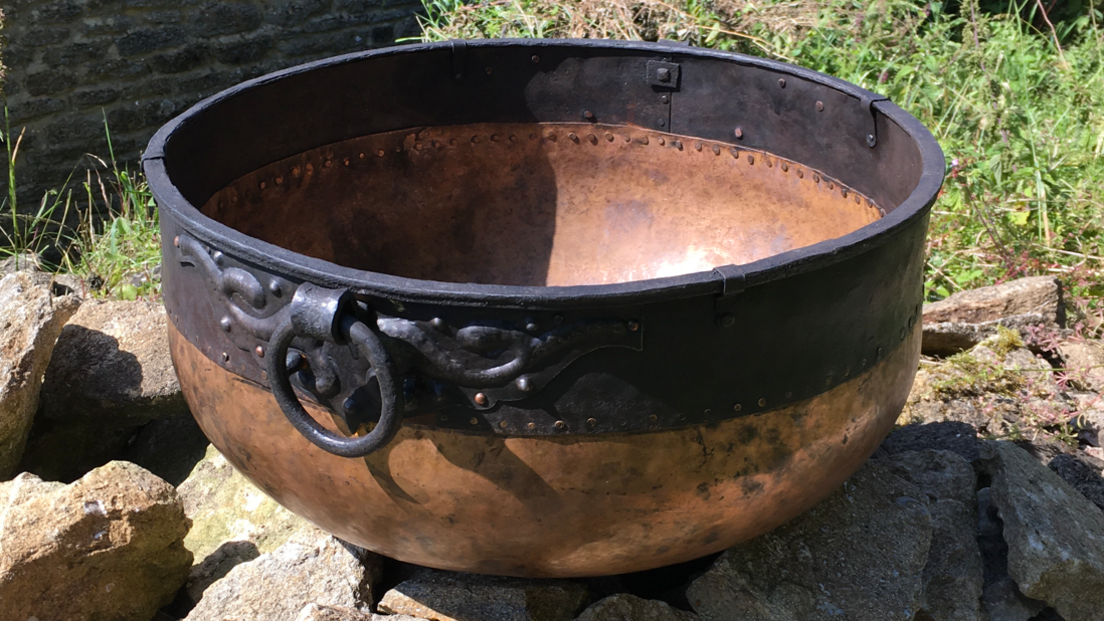
- Published27 January 2023
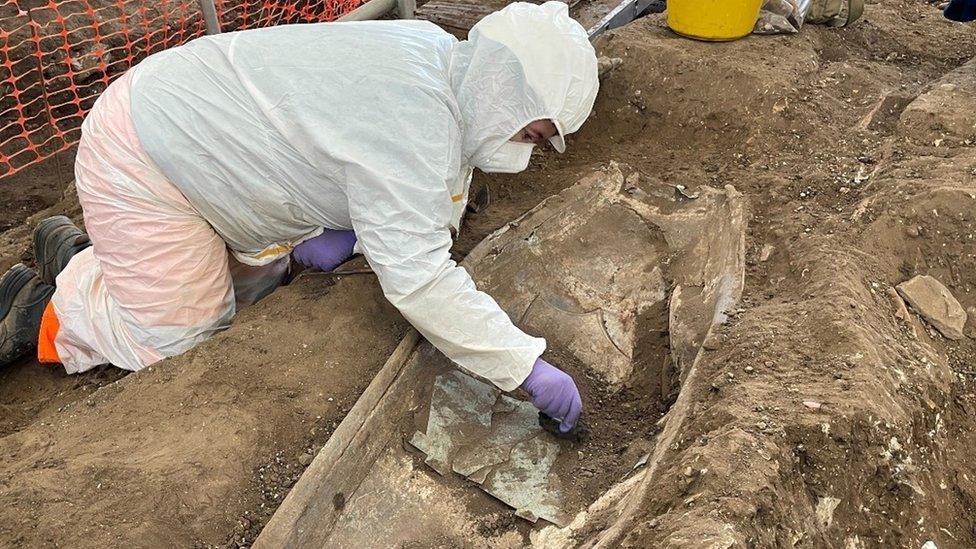
- Published27 April 2022
